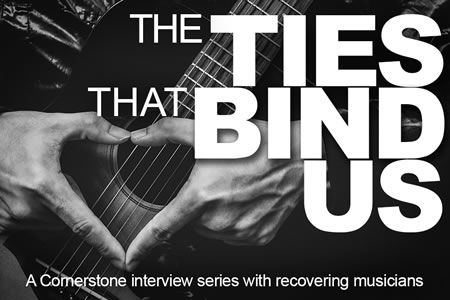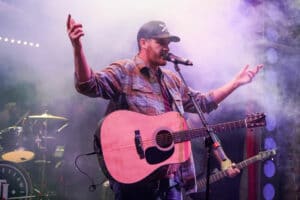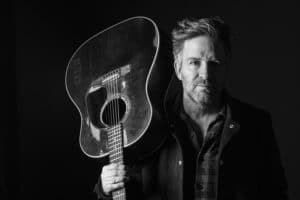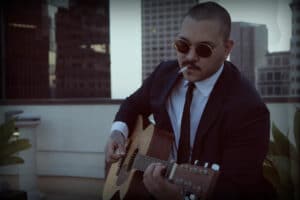HOPE ROCKS: One town’s response to its young people lost to addiction

All photos courtesy of Jim Peppler
HOPE ROCKS: One town's response to its young people lost to addiction
EDITOR'S NOTE: As we look at the beginning of a new year, we're pleased to announce an expansion of focus for The Ties That Bind Us. We'll continue to profile artists in recovery, but we're also wanting to bring you interviews with others in the arts community who are recovering, or those who are pushing back against the darkness that continues to claim so many lives. One such person is Joe Defino and his team at Hope Rocks in Saugerties, N.Y. ...
When death came to his hometown, Joe Defino wasn’t content to let it lay unimpeded waste to the kids who had passed through his classroom.

Whatever positivity they received at the Morse Rocks Music and Arts Festival, however, was overshadowed by the drug epidemic that’s sank its fangs into towns across America. A few years back, Defino started going to more funerals and memorial services of his former students than he ever had before, so many that by 2016, he needed more than two hands to count them all.
“I remember sitting at one of the memorial services and watching these 17- and 18-year-old kids mourning the death of their friend, and they were as strung out as can be, and I was hit by the realization that they didn’t even realize what was happening,” he said. “They were wallowing in their own sadness, but they were probably going to repeat the fate, and I just thought, ‘This is craziness. I’ve got to do something.’
“I didn’t get into teaching to not make a difference; I got into it to empower young people to have the future they want to have. And to see these 17-, 18-, 19- and 20-year-old kids gone because of things they couldn’t control, it just didn’t sit right. So I went back to my Morse Rocks team and said, ‘I’d like to try something different.’”
The message of Hope

“Bringing light to an issue is one thing, but we also wanted to bring in solutions and support and all kinds of real, tangible services to the festival for individuals, for families, for whoever,” Defino said. “We’ve got services, we’ve got personnel, we’ve got organizations there that can help, and we wanted to bring people to these organizations.”
From a budgetary standpoint, they opted to do away with gate admission so that anyone in need can attend without cost. That puts an extra emphasis on the need to raise funds, but for the second year of Hope Rocks, organizers were even more successful: Singer-songwriter and Grammy winner Mike Farris was the headliner, along with a smorgasbord of regional Hudson Valley talent, and the reception was enough to launch a sort of “Hope Rocks” brand, Defino said.
“Bringing Mike up was huge for us, because the people that have lived (in addiction) can share hope with people who are presently living in it, and those who don’t know a lot about it,” he said. “We want to give them an idea of the hope, as well as information about the power of addiction and mental illness and all of the things that go along with it. It’s something we’ve got to do, especially when you think about what we lose each and every day in terms of human potential and our future.
“This year, as we head into 2019, we’re expanding things into incredible areas. We’ve got Hope Rocks the Campuses, where we’re putting on Hope experiences for universities and colleges; we’re doing Hope Rocks events at venues in the area; we’re going to other counties. I look at it almost like the Super Bowl. Super Bowl 1 and 2 were games, but Super Bowl 3 became an event, and that’s what we’re looking to do.”
Knowledge is power

“We want acts that can not only empower people with their music, but also with their walk — their struggle, their journey, their testimony, because it’s a two-way street,” he said. “They’re not only going to heal or help the audience heal, but also work toward further recovering that individual who’s just starting to open up.
“I believe if you get up and tell your story, you’ve just empowered yourself in a way. When you tell your story in front of 2,000 people, you help them figure out what they’re looking for: How do we pick ourselves up? Because that’s really what we’re after, and that’s empowering not only the audience, but anybody that’s involved.”
It’s at the heart of what the festival is designed to do: To borrow a passage from the literature of a 12 Step program, the message is hope. It’s right there in the title, and for Defino, playing a part in the organization of Hope Rocks not only helps those who suffer in his community, it keeps alive the spirits of those former students who lost their battles.
“That’s our mission as far as what we do with Hope Rocks,” he said. “When we start every (organizational) meeting, there are a couple of posters we have where we unfortunately have to add names of individuals who have passed away since last meeting, and we have a moment of silence.
“We try to remember that in the time we’re doing this, we’re losing people, and we don’t want to forget them. We have to keep the humanity involved and keep the humanity at the forefront.”
Check Out These Other Artists' Stories






